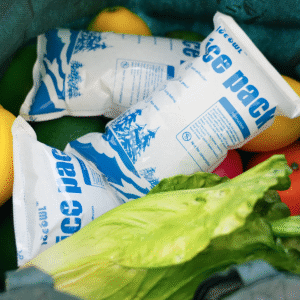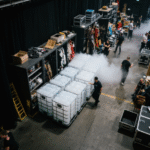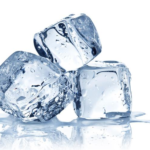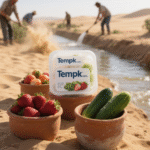Dry Ice Packs for Shipping Plants: 2025 Führung
Updated: August 14, 2025
If you’re evaluating dry ice packs for shipping plants, here’s the bottom line: use them for frozen, non‑viable plant materials; avoid them for live plants and cuttings. Dry ice is −78.5 °C (UN1845) and triggers specific 2025 IATA/USPS/DOT rules; gel or PCM coolants are safer for 2–8 °C live shipments.
-
Decide quickly when dry ice packs for shipping plants are appropriate (and when 2–8 °C is wiser).
-
Comply in 2025 with UN1845 labels, venting, and booking/net‑mass requirements.
-
Pack correctly for frozen specimens (≤−70 °C) vs. live plants (Cool, not frozen).
-
Plan lanes with simple sizing rules, timelines, and an at‑a‑glance decision tool.
When are dry ice packs for shipping plants the right choice?
Short answer: Use dry ice packs for shipping plants only when the contents must stay frozen (≤−70 °C), such as lab tissues or extracts. For live plants, plugs, bouquets, or cuttings, keep them cool (2–8 ° C) with gel/PCM—do not einfrieren. Carriers pair dry ice with “frozen,” and gel coolants with 1–10 °C.
Live plant tissue suffers freeze injury at temperatures well above −78.5 °C; cell water and respiration are damaged, while research samples benefit from RNA/DNA preservation when shipped on dry ice and stored at −80 °C. That’s why labs specify dry ice, but nurseries don’t.
Temperature bands for common plant shipments
Key idea: cool ≠ frozen. For live plants, aim for 4–10 °C; for frozen research material, use ≤−70 °C and follow UN1845 rules.
| Shipping Goal | Typical Range | Refrigerant | What it means for you |
|---|---|---|---|
| Keep live plants viable | 2–8 ° C (some 4–10 °C) | PCM/gel +5 °C | Avoid freeze injury; simpler compliance and labeling. |
| Dormant bulbs/bareroot (short lanes) | ~−10–0 °C | Frozen gel/PCM −20 °C | Use cautiously; insulate to prevent partial freezing. |
| Frozen tissue/specimens | ≤−70 °C | Trockeneis (UN1845) | Requires vented packaging, Klasse 9 Etikett, net mass marking. |
Practical tips you can use today
-
Live plants: Insulated shipper + restraint insert + PCM +5 °C; precool the box (not the plant); avoid weekend holds.
-
Cut flowers: Focus on immobilization; carriers do not recommend dry ice for florals.
-
Frozen specimens: Triple containment; dry ice outside the secondary container; vented packaging mandatory.
Field‑tested case: A herbarium shipped frozen leaf punches on dry ice with vented packaging; all samples arrived <−70 °C and passed QC. A prior 2–8 °C trial failed RNA integrity checks—hence the need for dry ice for this use.
Was 2025 rules govern dry ice packs for shipping plants?
Fazit: Dry ice is Klasse 9 Gefahrgut (UN1845). Packages must CO₂ Wind, display the proper shipping name Und UN -Nummer, and show the net dry ice mass (kg). Follow IATA DGR PI 954 and the 2025 Dry Ice Acceptance Checklist; USPS accepts dry‑ice‑cooled parcels if packaging vents CO₂.
Key checkpoints (2025):
-
Vented outer packaging—never airtight. 2) Klasse 9 label applied square‑on‑point (100 mm). 3) Proper shipping name: “Dry ice” or “Carbon dioxide, solide,” UN1845. 4) Net mass of dry ice (kg) on the box; many operators require net mass at booking dieses Jahr.
Passenger & postal specifics that trip teams up
-
Passenger baggage: 2.5 kg (5.5 lb) dry ice per passenger with airline approval; vented package and marking required.
-
USPS air: ≤5 lb dry ice per mailpiece for air; must vent CO₂ per Pub 52. Ground service differs.
-
Worker safety: Packout areas need ventilation; CO₂ can displace oxygen—heed OSHA/NIOSH guidance.
How do you pack frozen specimens with dry ice packs for shipping plants?
Goal: keep specimens ≤−70 °C and maintain compliance.
Step‑by‑step (specimens, not live plants):
-
Freeze per protocol (Z.B., snap‑freeze; target ≤−80 °C on hold).
-
Triple containment: vial → watertight secondary → insulated outer.
-
Dry ice placement: around the secondary, not touching vials; use blocks for longevity, pellets to fill voids.
-
Venting: never seal edges airtight; allow CO₂ to escape.
-
Markieren & Etikett: Klasse 9 Diamant, “Dry ice/Carbon dioxide, solide,” UN1845, net mass (kg); include details on the air waybill when contents are non‑DG.
Sizing rule of thumb: Plan 5–10 lb dry ice per 24 h, then buffer for season and insulation; blocks reduce surface area for slower sublimation.
Live shipments: alternatives to dry ice packs for shipping plants
For live plants, choose cool—not frozen. Verwenden PCM +5 °C gel packs and robust insulation; restraint and airflow matter as much as refrigerant. Many nurseries plan for ≥30 h runtime and ship early‑week to avoid weekend holds.
Cooling and heating options at a glance
| Option | Hold Behavior | Typische Verwendung | For you |
|---|---|---|---|
| PCM/gel +5 °C | Buffers peaks, narrow band | 2–8 °C live plants | Safer than dry ice; easier compliance. |
| Frozen gel −20 °C | Colder, risky if misused | Dormant bulbs (short lanes) | Insulate well; monitor to avoid partial freeze. |
| Wärmepackungen | Adds ~10–15 °F for 48–72 h | Winter lanes | Keep off foliage; vent cartons. |
| Trockeneis | –78,5 ° C., CO₂ release | Frozen specimens only | Not for live plants; UN1845 rules apply. |
Actionable packout patterns
-
Summer heat, tropicals: Double‑wall corrugate + EPS 1–2″ liner; 2–4 perimeter gel packs at +5 °C; vent holes for airflow.
-
Mild overnight: Breathable carton with restraint; no refrigerant or a single gel pack if forecast spikes.
-
Succulents: Emphasize restraint and vents; avoid excess moisture and condensation.
Pro tip: Pre‑condition coolants fully and pre‑cool the empty shipper, not the plant. Under‑conditioned packs underperform, and pre‑cooling the box extends hold time.
2025 trends that affect dry ice packs for shipping plants
What changed this year: IATA’s 2025 Dry Ice Acceptance Checklist is active; several operators ask for net dry‑ice mass at booking to respect aircraft limits. Carriers continue to stress venting and correct label dimensions.
Latest developments at a glance
-
Checklist refresh: Embed the 2025 dry ice acceptance form in your SOPs.
-
Operator job aids: Label placement, “don’t write in the diamond,” and net‑kg reminders are widely reinforced.
-
Market insight: Nurseries keep live plants in the 4–10 °C band and reserve dry ice for lab work; overnight remains the norm, but pack for ≥30 h.
Regulatory & permits note: APHIS permits and state quarantines still apply for plants and seeds; align labels and documents before you pack.
Dry ice packs for shipping plants: FAQs
Q1: Is it ever safe to use dry ice packs for shipping plants that are live?
Verwenden dry ice packs for shipping plants only for frozen, non‑viable plant materials. For live plants, use PCM +5 °C and restraint.
Q2: What labels go on a dry‑ice package in 2025?
Wenden Sie die an Klasse 9 Etikett; mark “Dry ice/Carbon dioxide, solide,” UN1845, and show net mass (kg); keep packaging vented; use the 2025 acceptance checklist.
Q3: Can I mail dry ice via USPS?
Ja, if the package vents CO₂. Für Luft, USPS limits dry ice to ≤5 lb pro Stück; ground differs.
Q4: How much dry ice do I need for frozen specimens?
Plan 5–10 lb per 24 h, then add buffer for hot seasons or thin insulation; blocks last longer than pellets.
Q5: Do I need a DG declaration for frozen plant tissue cooled by dry ice?
For non‑DG contents, typically no DGD; include dry‑ice details on the air waybill. If contents are DG, file a full DGD.
Zusammenfassung: dry ice packs for shipping plants
Verwenden dry ice packs for shipping plants only for gefroren specimens; keep live shipments in 2–8 ° C with PCM +5 °C, strong restraint, and vents. Label UN1845, apply Class 9, mark net kg, and follow the 2025 acceptance checklist. Qualify lanes with ISTA 7E and plan for ≥30 h runtime.
Nächste Schritte (CTA):
-
Classify your shipment (live vs. gefroren).
-
Pick the coolant (PCM +5 °C vs. Trockeneis).
-
Select a lane‑validated shipper and label set.
-
Ship early‑week; monitor the first 3 runs; refine. Need a turnkey kit? Book a 15‑minute consult and we’ll map coolant mass, Isolierung, and labels to your routes.
Über Tempk
We design insulated shippers, PCM gel packs, Und dry ice solutions that pass ISTA 7E. Our engineers integrate 2025 carrier checklists into SOPs—complete with label sets, net‑mass calculators, and packout guides—so your dry ice packs for shipping plants are used only where they belong, and your live shipments arrive healthy. Talk to us for a lane‑matched kit or a custom packout plan.
























